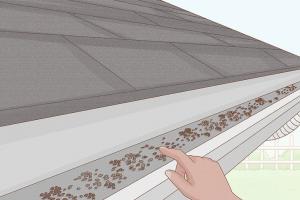Ultimate Guide to Reroofing Your House: Step-by-Step Insights

-
Quick Links:
- Introduction
- Why Reroof?
- Types of Roofing Materials
- Tools and Materials Needed
- Step-by-Step Reroofing Guide
- Case Studies and Real-Life Examples
- Cost Analysis of Reroofing
- Safety Tips During Reroofing
- Common Mistakes to Avoid
- Expert Insights on Reroofing
- FAQs
Introduction
Reroofing your house can be a daunting task, yet it is a crucial part of home maintenance. Whether you’re facing leaks, damaged shingles, or simply looking to upgrade your home’s aesthetic, understanding the reroofing process is vital. This comprehensive guide provides everything you need to know about reroofing—from materials and tools to step-by-step instructions and expert insights.
Why Reroof?
Reroofing is more than just a cosmetic upgrade; it’s essential for the longevity and safety of your home. Here are some reasons you might consider reroofing:
- Protection: A new roof protects your home from weather damage.
- Energy Efficiency: Modern roofing materials can improve your home’s insulation, leading to lower energy bills.
- Aesthetic Appeal: A new roof can enhance your home’s curb appeal.
- Increased Home Value: A new roof can increase your property’s market value.
Types of Roofing Materials
Choosing the right roofing material is crucial. Here are some popular options:
| Material | Durability | Cost | Maintenance |
|---|---|---|---|
| Asphalt Shingles | 15-30 years | Low | Low |
| Metal Roofing | 40-70 years | Medium | Medium |
| Tile Roofing | 50-100 years | High | Medium |
| Slate Roofing | 75-200 years | Very High | Low |
Tools and Materials Needed
Before starting your reroofing project, gather the necessary tools and materials:
- Roofing Hammer
- Utility Knife
- Safety Harness
- Ladder
- Roofing Nails
- Felt Paper
- Shingles
- Caulking Gun
Step-by-Step Reroofing Guide
Step 1: Assess Your Roof
Before beginning any work, inspect your roof to determine the extent of the damage and the type of roofing material used.
Step 2: Remove Old Roofing
Use a pry bar to remove old shingles and underlayment carefully.
Step 3: Repair the Roof Deck
Check for any damaged plywood or beams, and replace them as needed.
Step 4: Install Underlayment
Lay down roofing felt to provide an extra layer of protection.
Step 5: Install New Shingles
Start at the bottom of the roof and work your way up, staggering the shingles for optimal coverage.
Step 6: Install Flashing
Be sure to install flashing around vents, chimneys, and valleys to prevent leaks.
Step 7: Clean Up
Remove any debris, check for stray nails, and ensure everything is in order.
Case Studies and Real-Life Examples
To illustrate the impact of reroofing, we will explore a few case studies:
Case Study 1: Family Home in Texas
After reroofing with metal shingles, the family reported a 30% decrease in their energy bills.
Case Study 2: Historical Building in Florida
The restoration of the roof using slate tiles preserved the building's historical value while improving its longevity.
Cost Analysis of Reroofing
The average cost of reroofing can vary based on material, labor, and roof size. Here’s a breakdown:
- Asphalt Shingles: $3,000 - $5,000
- Metal Roofing: $5,000 - $12,000
- Tile Roofing: $10,000 - $25,000
- Slate Roofing: $15,000 - $30,000
Safety Tips During Reroofing
Safety should always be your top priority. Here are key tips:
- Always wear a safety harness.
- Use a sturdy ladder.
- Work with a partner whenever possible.
- Check the weather forecast before starting.
Common Mistakes to Avoid
Here are some common pitfalls that many homeowners face during reroofing:
- Not checking local building codes.
- Skipping the underlayment.
- Improper installation of flashing.
- Ignoring weather conditions.
Expert Insights on Reroofing
Experts recommend conducting regular roof inspections and maintaining your roof to prolong its life. Consulting with a professional can also help avoid costly mistakes.
FAQs
1. How long does reroofing typically take?
It can take anywhere from a few days to a couple of weeks, depending on the size and complexity of the roof.
2. Do I need a permit to reroof my house?
Yes, most localities require a permit for roofing work. Always check with your local building department.
3. Can I reroof over existing shingles?
In many cases, yes, but it’s essential to follow local codes and manufacturer guidelines.
4. What are the signs I need to reroof?
Look for cracked or missing shingles, leaks, and sagging areas.
5. How can I choose the right material for my roof?
Consider factors such as climate, budget, and aesthetic preferences.
6. Is reroofing a DIY project?
It can be, but it requires skill and safety precautions. Hiring a professional is often advisable.
7. How much does reroofing cost?
The average cost ranges from $3,000 to $30,000, depending on materials and roof size.
8. How do I maintain my new roof?
Regular inspections, cleaning gutters, and replacing damaged shingles are key to maintenance.
9. What should I do if I find a leak?
Address it immediately by patching the area and consulting a professional if necessary.
10. Can I install a new roof in winter?
It’s possible but can be challenging due to weather conditions. Consult with a professional for guidance.